Freud or Flop? Where TV analysis meets psychoanalysis
How Freud's Theory of Personality can make or break a show
Welcome to our second substack! A place where Alan and I talk about psychology, psychiatry, and neuroscience in weird ways.
Here’s how it works: I share my musings, Alan comments, next time (in about 2 weeks) we switch.
I’m a fan of TV. I like nothing better than finding a great show and unwinding after a long day. Chocolate, a cup of tea, and an episode of Star Trek or Buffy always hits the spot.
Alan: I vote
SteakFamily.
But some shows are just terrible. Why? The answer, my friend (to this and many other questions), is Freud.
Alan and I spend a whole lot of time talking about how people think. These conversations often devolve into debating the different psychological perspectives that pop up in movies and shows (That’s what happens when you get a psychiatrist and a psychologist in a room—I know, we’re a hoot). It’s a far cry from hard science but it’s fun and arguably there’s some merit since, what better way to study humans than to dissect the art they create?
Alan: Better ways include the following: fMRI, EEG, MEG, fNIRs, PET, MRI… with ample funds … and a very laxed IRB… and great research assistants.
People in the storytelling business generally agree on makes a good watch: interesting characters in a well-defined world with high stake goals and lots of obstacles. And yet, sometimes, despite all the boxes checked for plot, motivation, stakes, and character development, a story can still fall flat. That’s because there’s one more necessary element for a story to fully resonate with us humans—and it’s an element that nobody ever talks about. A good story has Freud.
Freud’s Theory of Personality
Sigmund Freud was an Austrian neurologist born in 1856. He’s considered the father of psychoanalysis, spouted off all sorts of weird sex theories, and championed the use of cocaine. One of his interests was developing the theory of the psyche or personality—and that’s what we’re going to talk about today.
Alan: but his primary interest was really cocaine … and “cigars”
Freud felt that the human psyche consisted of three parts:
Id
The unconscious id is driven by the “pleasure principle.” This part of ourselves is impulsive, seeks immediate gratification, and is based on instinctual drives—think sex, food, anger but creativity, too.
Alan: to truly understand what Freud was suggesting here think “penis”
Superego
The counterpart to the id is the superego. It’s all about rigid rule following, societal morals, ethics, and structure.
Alan: he’s probably thinking vagina here, but I want to be super clear that this is Freud who was thinking this, not me. I mean I can’t believe he even made that comment. Freud … be better.
Ego
The ego strikes the middle ground and balances the other two. It’s the commonsense that tempers the passion of the id and navigates the confining rules of the superego.
Alan: penis, or cigar, or whatever.
All of us have all three parts: the id, ego, and superego. They work together to make us nuanced, complicated, complete humans.
Similarly to how we fall in love with complicated, complete humans, we fall in love with movies, shows, and books that are complicated and complete, too. For something to really resonate, it needs to encapsulate all of Freud’s personality theory.
An iconic example of Freud’s Theory of Personality in play is Friends. It was nominated for a bunch of awards and, even though it’s been 20 years, it’s still crazy popular. Not only did Friends have the complete psyche—it doubled it.
Friends (1994-2004)
Six friends living in New York City supporting each other through the ups and downs.
Superego: Monica- neat freak, rule-based, obsessive compulsive
Ego: Rachel- navigating career, love, and trying to find herself; “girl next door”
Id: Phoebe- free spirited artist and singer
Superego: Ross- rule following, obsessive paleontology professor
Ego: Chandler- normal job, sense of humor, “nice guy”
Id: Joey- quick to spend, quick to play, quick to eat, quick to sex
Alan: Yeah, Joey is spot on — in a NSFW version he has fathered a small village.
How about America’s longest running sitcom? It’s no coincidence that it also embraces the classic full psyche.
The Simpsons (1989-current)
Alan: actual dates are: (1989-end of civilization)
The Simpsons are a loving but dysfunctional family trying to make it through the day.
Superego: Lisa- rule following, intensely ethical, and brain-y
Ego: Marge- tries to harmonize the family by finding the middle ground
Id: Bart and Homer- both impulsive, both given to pleasure
Alan: Depending on the episode, Lisa and Marge will exchange places. But the penultimate ego may be the indomitable Maggie ~ the perfect rational balance of all things — although an attempted murderer.
Monk (2002-2009)
A detective with paralyzing obsessive compulsive disorder
Superego: Captain Stottlemeyer- The rule following police captain
Ego: Natalie- tasked with nudging Monk toward reason
Id: Monk- impulsively giving in to his 312 phobias
Monk is interesting in that his very rigid thinking suggests superego. However, it’s his impulsivity (which places him at odds with rationality, societal norms, and commonsense) that drives the story…making him an id.
Alan: I was thinking the same, his rules are not the society rules….
Great shows have full psyches. When a show, movie, or book fails, check out the psyche—it’s probably incomplete.
Two person shows… Where’s Freud?
But wait. A bunch of stories feature only two characters. Fox and Scully. Sherlock and Watson. Ernie and Bert. This breaks the rule…or does it?
Dynamic duos have three characters, too—an invisible character and it’s always the ego.
Consider The Good Place (Season 1; psyche assignments change dramatically later on) when broken down into dyads.
The Good Place (2016)
Eleanor Shellstrop—a horrible person—is accidentally sent to the good place after her death and has to contrive a way to stay.
Id: Eleanor Shellstrop- just the worst
Superego: Chidi Anagonye- professor of moral philosophy
Id: Jason Mendoza- Molotov-throwing amateur DJ
Superego: Janet- an Alexa that actually works
Id: Tahani Al-Jamil- self-absorbed socialite
Superego: Michael- architect of the good place
As you can see, lots of Id and Superegos. Not an ego in sight. But…
These (and almost all) shows are all about moving the superego or id to an ego. The ego is there but “invisible” until character growth is achieved. Typically, it’s the other characters that provide the nudge toward change. For example, Chidi’s supergo moves Eleanor’s id to ego. And, as is always true, when the ego is reached, the story is over.
Alan: I wonder if by the end of the blog will the humble little id of alan become a beautiful ego … or a swan.
A show with a big Freudian problem….
Psych (2006-2014)
A fun-loving fake psychic solves crimes through the power of observation.
Superego: Gus- responsible friend with a reliable job
Superego: Henry- Shawn’s father and former detective
Superego: Lassiter- detective
Ego: Juliet- junior detective who tempers Shawn’s outbursts with reason
Id: Shawn- Solves crimes with “psychic powers” when he’s not enjoying sex, food, and laziness
Alan: For those who haven’t watched this — we are not implying Shawn rolls like a narcoleptic binge eating porn star. He just chews scenery.
In the early days, Psych set up tension between the superegos Gus, Henry, and Lassiter with the over-the top id Shawn. He was such an id that he needed three superegos for balance. However, as the series progressed, the ids grew in number (I’m guessing because the actors wanted fun roles).
By the end, this is where it ended up:
Id: Shawn
Id: Gus
Id: Lassiter
Alan: so true — when Gus and Shawn did their id fighting it broke Freud’s fundamental balance (think battling penises — sorry, you don’t have to).
The vast majority of air time became the three id stars and their romps. Juliet (ego) and Henry (superego) basically disappeared. Character growth—the movement toward the ego—was sacrificed for the antics of ids.
Here’s the catch. Ids are fun but they’re only tolerated by us humans if they’re actively striving to become egos. Ids left to be ids are generally repulsive in their unending pursuit of self-gratification and sex. Ultimately, Psych had declining viewership which led to cancellation.
Basically, it comes down to this. It doesn’t matter how zany id the characters or what crazy stuff they do. If the superego or ego is missing, the story is uninteresting. And the flip side: if a story is all high-stake superego seriousness with no id or ego, it’s boring. Something for all those writers and screenwriters out there…Got Freud?
If you want to see a really, really great use of Freud’s Theory of Psyche in a movie (Psych residency movie night anyone?):
Six Degrees of Separation (1993)
The lives of two married elite art dealers are affected by a young con man pretending to be a fellow member of the elite.
Superegos: Ouisa and Flan
Id: Paul
Ids nudging superegos. Superegos moving ids. Throw in a diptych (a two-sided painting)—one side wild and the other organized—to symbolize the completed ego. Goosebumps.
Alan: ohhhh, this is so good. And so spot on. Sadly, when Paul slapped Chris Rock, it ruined this wonderfully crafted character arch.
Every Boots and the Brain has two parts
1. How humans think (The Brain-y part—this is typically Alan) and
2. The boots on the ground practical application (typically me)
Boots
We all have the id, ego, and superego inside us. But one can dominate.
Id:
Are you too impulsive? Do you look before you leap?
Use the STOP technique to keep the id in check.
When making a decision, take a moment to evaluate before plowing ahead.
S: Stop
T: Take a Step back
O: Observe
P: Proceed mindfully
Superego:
Or, are you too much thinky-thinky? Too rigid, too structured, and too much the rule follower?
Soften the superego with a gratitude boost:
Take stock of what’s important to you. Are the rules truly that important? Does it really matter if your shirt is wrinkled? Or the fork is on the right? Breathe and remind yourself of what brings you joy.
And The Brain…
Alan: Much of data science is concerned with clustering or dealing with unstructured data. This is often done with k-means, hierarchical clustering, DBSCAN, SOM, or some other way. Fundamentally, the divisions of psyche act to consolidate the multitude of principles that may guide our behavior. Similarly, in our brain, we have exteroceptive and interoceptive signals that we integrate into our decision making. The clustering of characters fits nicely into a similar frame of these physiological and sociological forces that guide the ego or guide the story through its transition from the impulsive id to the ego. Finally, when the id or superego becomes ego, we can think about the corollary of the action moving from the afferent to the efferent and the resolution of the action, otherwise known as the ego of the story.
Thank you for reading. Consider subscribing—it’s free. Also, please take a moment to give us a heart— it helps people find us.
We would love to know your thoughts. Have any thoughts about books, shows, movies, and Freud? We’d love to hear it!

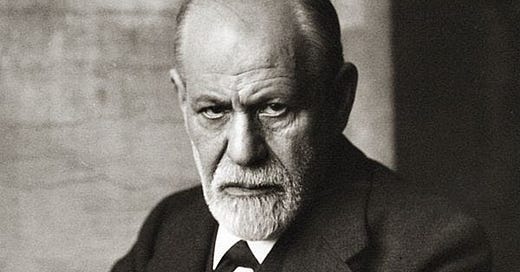





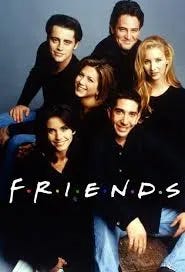
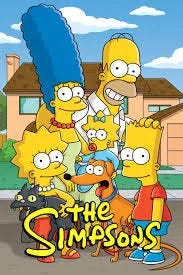
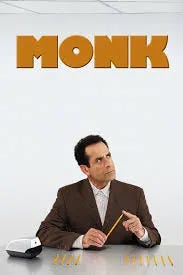

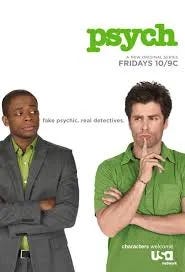
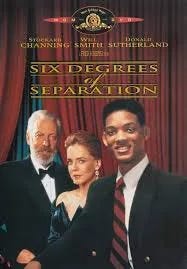
Enjoyed reading through this! Would love to see your breakdown of Season 3 White Lotus, there are SO many Freudian undertones :) Looking forward to the next post, keep up the great work!
Very interesting. It explains why I suddenly have to turn a show off. I am eager to see more.